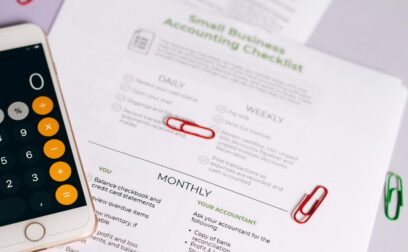Author: Kerry Dwyer, Equity Account Manager, Swoop
Women are under-represented in decision-making positions at venture capital (VC) firms, resulting in women claiming less funding than they deserve. Kerry Dwyer, Equity Account Manager at Swoop explains how this can (and must) change.
Entrepreneurship is the bedrock of a thriving economy, and post-pandemic, supporting the country’s entrepreneurs is crucial to our recovery. These are the people creating jobs, driving innovative ideas and improving society; however, the figures show that we are missing a huge opportunity.
The gender investment gap may not be as well documented as the gender pay gap, but it’s an issue we need to pay more attention to as VC remains strongly skewed towards male founders. Crunchbase data shows that only 2.3 percent of VC dollars raised were by female founders in 2020, and this is a decline from 2.8 percent in 2019, with similar figures for the UK VC world (<3 percent).
An unbalanced industry
We need a more diverse investor base, or at least a more open-minded one. Women are significantly under-represented in investment teams, with just 13 percent of decision-makers in the UK’s VC scene.
Experience shows that women are more likely to invest in women, and the more difficult it is for females to break into the VC world, the more likely existing investment committees are to unconsciously seek similar investments to what they’ve supported before.
Change is not an overnight process, so an effort needs to be made now to ensure an increased female presence in the industry – from entry level roles to limited partners.
What do female founders want?
Starting a business can be daunting. According to the Wealthiher network, 72 percent of women in the UK feel that they are not understood by the finance industry and 57 percent want less jargon. Acronyms and terms like ‘bootstrapping’, ROI, CAC, LTV, ‘pre-money’, ‘post-money’, ‘preferred stock’, run rate and ARR, are part of the new language with which many entrepreneurs have to become familiar. It has also been found that women’s pitches are less likely to try to shoot for the moon, and more likely to state facts and be more conservative with their projections than their male counterparts, thus making their proposals less appealing on paper.
Why don’t VCs invest in more women?
In addition to the points above, other arguments for the lack of gender diversity in the VC world include, greater childcare responsibilities for women, less of a network in male-dominated industries; and essentially, less time outside of the day job to network and work on their business. What is more, women are less likely to come from STEM industries where investors, and more increasingly government bodies, are looking for opportunities to support. Sarah Turner, Founder and CEO at Angel Academe highlights that female founders tend to concentrate on certain sectors such as beauty, health, social care and retail.
“There are lots of startups that aren’t really scalable or operate in extremely crowded markets. We’d like to see more opportunities that are clearly differentiated for large, but under-served markets.”
Female founders have a role to play themselves; anecdotally, women tend to be more self-limiting than men. Perhaps the way forward is for women to have greater confidence in an idea and boldly going where sometimes few women have gone before. At Swoop, we have seen an increase in demand in areas such as infrastructure and forestry where the number of female entrepreneurs is lacking compared to men. Women in these and other areas, such as STEM, should see their under-representation as an opportunity to stand out by showing leadership rather than keeping quiet about their ideas.
We all find it easier to look at a problem or topic we know and understand personally:
an all-male investment team will have difficulty in imagining a market for products that directly speak to female needs and concerns.
For example, the founders of sexual wellness startup HANX, who are disrupting a category that’s always been male-dominated, say they faced preconceptions given the industry they were heading into. Despite their backgrounds in investment banking, gynaecology and obstetrics, the female co-founders have encountered ‘mansplaining’ of the sexual wellness industry, plus suggestions to slash their valuation from VCs – alongside sexualised comments in pitches.
Investors should take steps to mitigate this affinity bias through market and customer research along with increasing female presence within their organisations, especially at decision making levels.
The bottom line: female-owned businesses are a good bet
Data shows a promising trend that once female founders get their initial seed funding underway, they are likely to be as successful as men in raising additional funds. It has also been shown that female founded startups produce more revenue on average.
A study conducted by Boston Consulting Group showed that in terms of how effectively companies turn a dollar of investment into a dollar of revenue, startups founded and co-founded by women are significantly better financial investments. For every dollar of funding, these startups generated 78 cents, while male-founded startups generated less than half that at just 31 cents.
It could be argued that maybe this data is skewed in that only the best of the best female founders are getting funded at the moment because they have had to prove themselves so much more than their male counterparts.
Creating an equal footing for female founders
1) Investor support
VCs need to follow on from this type of support with commitment to developing their pipeline of female founders through new sources, networking and knowledge sharing events, as well as diversifying their own team of analysts. Playfair Capital’s Female Founders Office Hours is an example of an initiative that is working to help female founders in tech specifically through collaboration and mentoring.
2) Government support
It is important for Governments and anyone working with female founders to address this issue and emphasise the economic importance of increasing female entrepreneurship numbers.
The Coronavirus Businesses Interruption Loan Scheme (CBILS) and the Bounce Back Loan Scheme (BBLS) were devised to provide financial support for businesses impacted by COVID-19, but many businesses need further support.
The latest Women in Innovation fund is offering £50,000 to 20 female entrepreneurs and innovators. A strong start, but as the Female Founders Forum report stresses: “Creating an environment where women start and scale businesses at the same rate as men could add nearly £250bn to the UK economy”, it hardly matches the scale of the issue.
The UK Government has published an Investing in Women Code which has been increasingly signed by a number of VCs including Frontline Ventures and JamJAr Investments. This is a welcome first step and we look forward to it leading to further positive action.
3) Get in the arena!
If you are a female with a good idea, take a calculated risk. As with any potential new business, ask: are you solving a major problem? Has your idea been tried and tested before and if so why will yours work? Why is this better? What’s your USP?
As Theodore Rosevelt said: “It is not the critic who counts… The credit belongs to the man who is actually in the arena.”
Ignore Rosevelt’s use of male pronouns: Swoop Funding (female founded, if you were wondering) helps founders to navigate the VC environment and be a support for introductory investor calls.
A challenge to the industry
Eliminating inequality in the world of investment means addressing a number of underlying factors. The gender funding gap issue is one that is systemic and female founders cannot fix it by themselves.
The lack of gender balance in a team ultimately leads to lack of gender balance in their investments. Investors need to hire more women and also men with a history of supporting female founded businesses and female orientated sectors. The growing number of successful female entrepreneurs as role models will lead to more female founders.
WealthiHer
HANX
Playfair Capital
Frontline Ventures
JamJar Investments




































 yet? Register here!
yet? Register here!